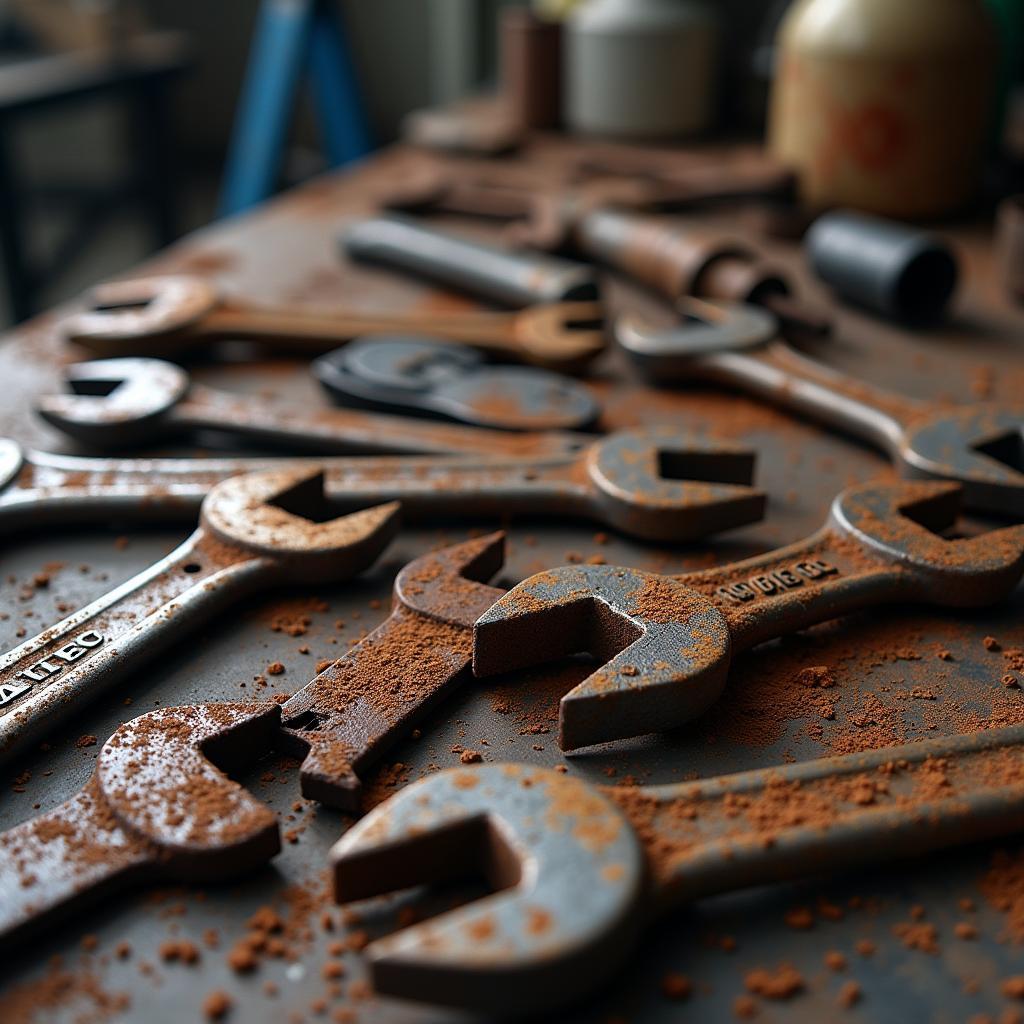Rust on tools is a common issue affecting every auto mechanic. It not only impacts functionality but can also lead to dangerous situations. But don’t worry, in this article, you’ll learn how to clean rusty tools and restore them to top condition. We provide practical pro tips and tricks to help your tools last longer and ensure safe work.
Rust on Tools: An Enemy of Efficiency
Rust, also known as iron oxide, forms from the reaction of iron with oxygen and water. In the context of car repair, this is particularly problematic as tools are often exposed to moisture and temperature fluctuations. This accelerates the corrosion process and leads to rust formation. A rusty tool is not only uncomfortable to hold but can also break or splinter, compromising workplace safety. “Rust is like a creeping thief that steals the lifespan of your tools,” says renowned tool expert Hans Müller in his book “Tool Care for Professionals.”
 Rusty tools in a car repair workshop
Rusty tools in a car repair workshop
Rust Removal: Proven Methods for the Workshop
There are various methods for cleaning rusty tools. The best method depends on the degree of rust and the type of tool. Here are some proven methods:
Mechanical Cleaning:
- Wire Brush: A wire brush is suitable for heavy rust. It effectively removes loose rust layers.
- Sandpaper: You can remove rust more precisely with sandpaper, especially in hard-to-reach areas. Start with coarse sandpaper and then switch to finer grits to achieve a smooth surface.
- Sandblasting: For heavily rusted tools, sandblasting is an effective method. This involves blasting sand onto the tool with compressed air, which removes the rust.
Chemical Cleaning:
- Rust Remover: Rust removers are chemical agents that dissolve rust, making cleaning easier. Apply the rust remover to the tool and let it sit. Afterward, you can remove the dissolved rust with a brush or cloth.
- Vinegar or Citric Acid: Household remedies like vinegar or citric acid can also be used for rust removal. Place the tool in a solution of vinegar or citric acid and let it soak for a few hours.
Prevention: Stopping Rust Before It Starts
Even better than removing rust is preventing it from forming in the first place. Here are some tips for rust prevention:
- Store Tools Dry: Store your tools in a dry place to avoid moisture.
- Clean and Oil Tools Regularly: Clean your tools after each use and oil them regularly to protect them from corrosion.
- Use Rust Protection Products: Special rust protection products offer additional protection against rust formation.
Cleaning Rusty Tools: FAQs
What is the best rust remover?
There are many different rust removers on the market. Which one is best depends on the degree of rust and the type of tool.
Can I still use rusty tools?
Whether rusty tools can still be used depends on the degree of rust. Heavily rusted tools may have impaired stability, which can lead to dangerous situations.
How do I clean rusty screwdrivers?
You can clean rusty screwdrivers with a wire brush, sandpaper, or a rust remover.
Rusty tools are a nuisance, but they can be fixed with the right methods and some patience. Prevention is even more important to help your tools last longer and ensure safe work. At Car Auto Repair, you’ll find more helpful tips and tricks for car repair. Visit our website for more information and feel free to contact us if you have questions. Our experts are available 24/7. You can reach us via WhatsApp at +1 (641) 206-8880 or by email at [email protected].